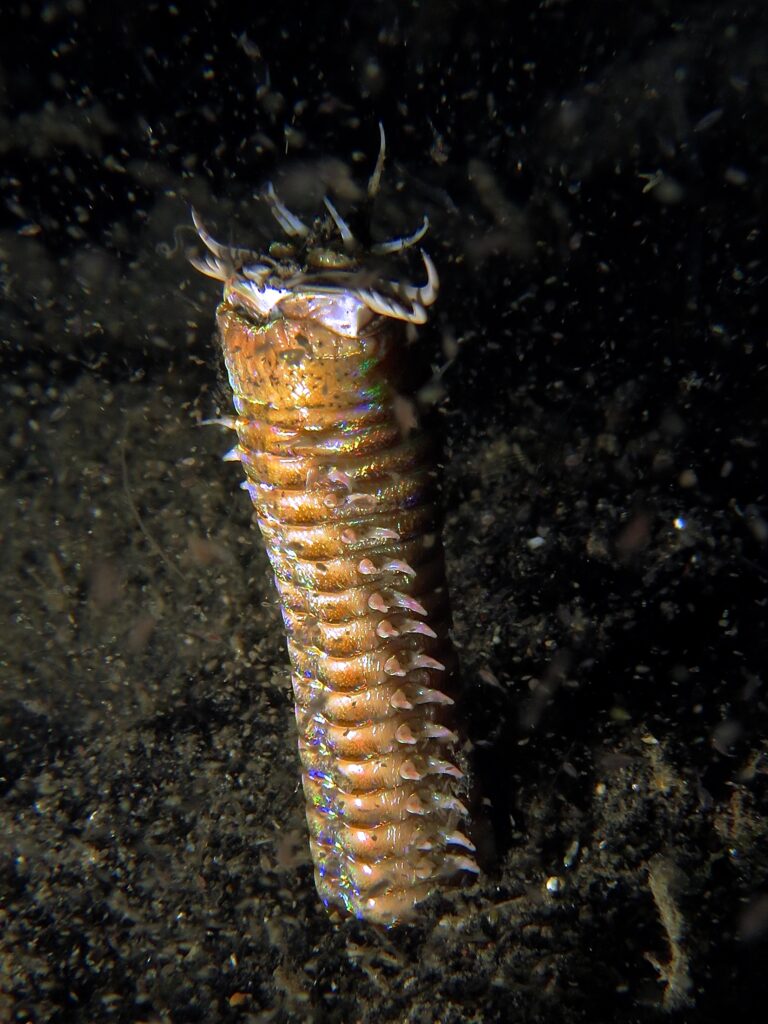
It’s October again and that means one thing: it’s the time of year for ghosts, goblins, and spooky monsters. Fantastical creatures like these might make the real world seem dull, but the Ocean Genome Legacy (OGL) Collection contains real-life horror movie creatures that will change your mind.
One example is the infamous Eunice aphroditois—the menacing Bobbit worm or sand striker. This eunicid polychaetae belongs to a family of tropical bristle worms known for their long, spiny bodies and massive jaws. These terrifying beasts, which can reach up to 10 feet in length, possess iridescent purple spikes that cover their entire bodies and are armed with fearsome tooth-like fangs called “maxillae.”
Bobbit worms spend most of their lives lurking underneath benthic sand beds, sticking their five worm-like antennae out to attract prey. They are not picky. They will attack anything that moves, from fish to octopus—even other worms. When an unfortunate victim comes along, the Bobbit worm lunges from the sand, striking its victim with enough force to stun or even cleave it in half! The worm then drags its prey—still living—into its horrible lair under the sand and injects it with a toxin that digests it alive. Talk about a scene straight from a Stephen King movie!
These frightening worms are but one spooky example of the many crazy creatures living in the deep. This Halloween, you can help support the documentation and preservation of such real-life movie monsters by making a gift to OGL.
